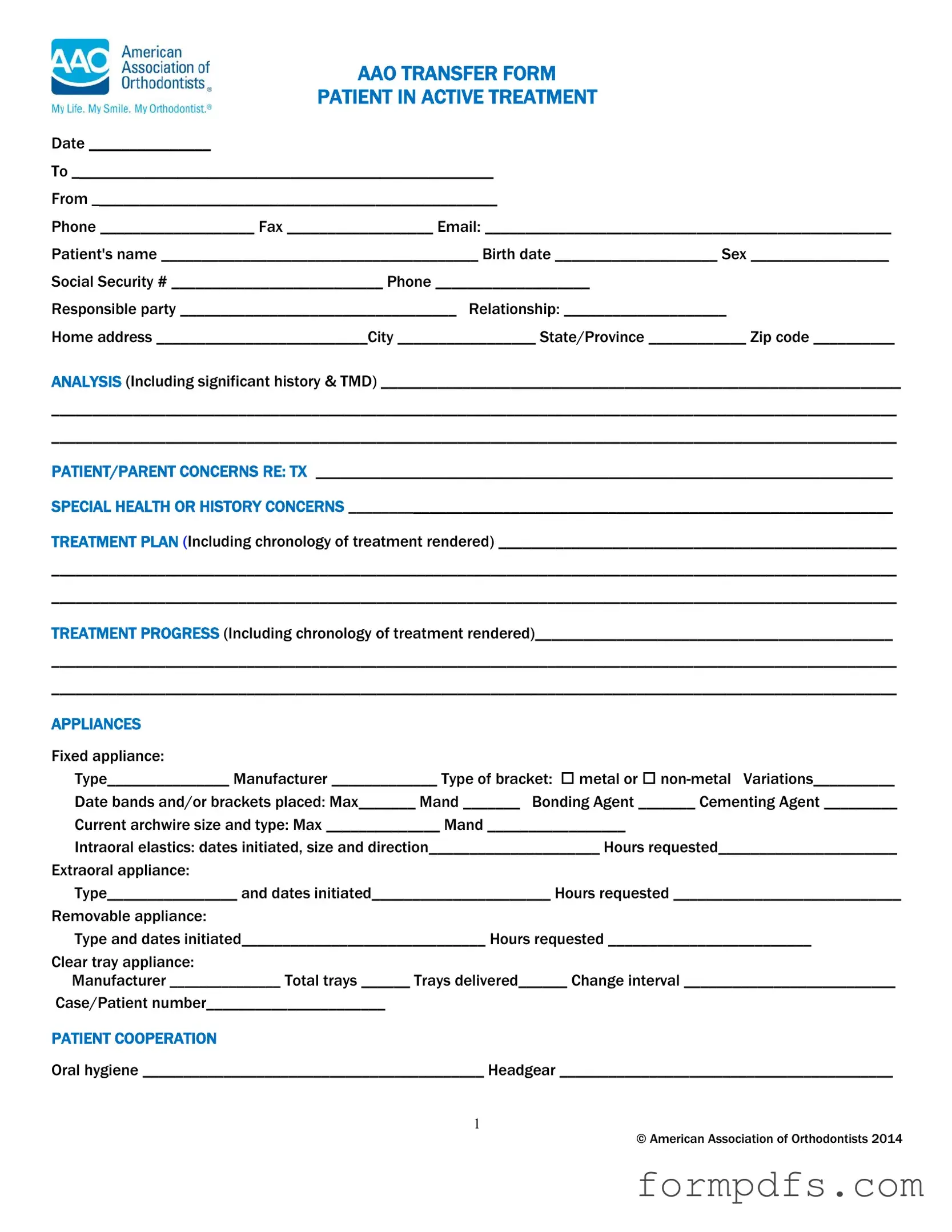What is the purpose of the AAO Transfer Form?
The AAO Transfer Form is designed to facilitate the transfer of orthodontic records when a patient needs to change orthodontists during their treatment. This form ensures that the new orthodontist receives all necessary information regarding the patient's current treatment plan, progress, and any specific concerns. By providing this information, the new provider can continue treatment seamlessly and effectively.
Who needs to fill out the AAO Transfer Form?
The AAO Transfer Form must be completed by the current orthodontist or their office staff. It is essential for the patient or their guardian to authorize the release of records by signing the form. This ensures that the new provider receives the necessary information to continue treatment without delays.
What information is included in the AAO Transfer Form?
The form includes comprehensive details about the patient, such as their name, birth date, and contact information. It also outlines the treatment history, including significant concerns, treatment progress, and any appliances used. Financial information related to the treatment, such as fees and payment status, is also documented to provide clarity for the new provider.
How does the transfer process work?
Once the AAO Transfer Form is completed and signed, the current orthodontist will send the patient's records to the new provider. This transfer includes all relevant documentation, such as treatment plans, progress notes, and any imaging or scans. It is crucial that the process is prompt to ensure continuity of care for the patient.
Will the treatment fees change after transferring?
Yes, it is important to understand that orthodontic treatment fees can vary significantly between different providers. Patients should be prepared for the possibility that transferring to a new orthodontist may result in an increase in overall treatment costs. The current provider will typically inform the patient about any financial implications associated with the transfer.
What should I do if I have concerns about my treatment?
If you have concerns regarding your treatment, it is advisable to discuss them with your current orthodontist before initiating a transfer. They can address your concerns and provide guidance on the best course of action. Open communication is vital to ensure that your needs are met during the transition to a new provider.
Can I request copies of my records?
Yes, patients have the right to request copies of their orthodontic records. The AAO Transfer Form includes options for record duplication. However, be aware that there may be an additional charge for this service. It is important to clarify any costs associated with obtaining these records when making your request.
What happens if my new orthodontist requires additional information?
If your new orthodontist needs further information beyond what is provided in the AAO Transfer Form, they will typically reach out to your previous provider. It is essential to ensure that your new provider has all the necessary details to continue your treatment effectively. Prompt communication between both offices can help facilitate this process.
How can I ensure a smooth transition between orthodontists?
To ensure a smooth transition, it is crucial to communicate openly with both your current and new orthodontist. Complete the AAO Transfer Form accurately and promptly. Additionally, maintain a positive attitude and be proactive in addressing any concerns or questions you may have throughout the process. This will help to facilitate a successful continuation of your orthodontic treatment.
